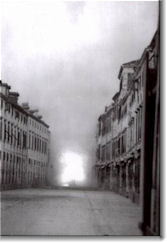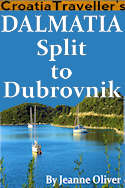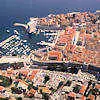It was the attack that shocked the world. In 1991 Dubrovnik was a UNESCO "protected" World Heritage Site, a designation that was supposed to save it from the war just boiling up in former Yugoslavia. It didn't.
Rising Tensions
The bombing of the Old Town of Dubrovnik began on 23 October 1991 but tensions had been rising for weeks, ever since Yugoslav forces implemented a sea blockade and moved into the surrounding region. The "Dubrovnik Riviera", including the entire coast from Srd Hill to Cavtat including the Dubrovnik airport was occupied by the Yugoslav army. The neighbourhoods of Ploce and Lapad and the Hotel Argentina were shelled from land and sea.
Dubrovnik was left practically undefended by Croatian forces as, frankly, no one thought the Yugoslav forces would dare to attack such an important cultural monument with negligible military value.
In fact, Serbian-Montenegrin forces wished to seize Dubrovnik from Croatia and annex it to Serbian-Montenegrin control.
Failed Ceasefire
|
The Old Town quickly filled with refugees from the region who crowded into hotels or, if they were lucky, the apartments of friends or family. Various international organisations attempted to negotiate with the attackers but to no effect. The shelling of the Old Town continued through the beginning of November and then there was a lull. Yugoslav forces signed several agreements to end the fighting even as the shelling continued.
St Nicholas Bombings
On 6 December the full crushing weight of Yugoslav artillery was turned on Dubrovnik in what became known as the "St Nicholas bombings". Intensive shelling by 82mm rockets and 120mm mortars continued for nearly 12 hours. The northwestern part of town including the Franciscan Monastery suffered heavy damage and there were numerous civilian casualties. There were 13 civilian deaths on that date alone.
Peace at a Price
A ceasefire was again brokered and the shelling died down until finally ending in June 1992. At least 43 people had lost their lives and the Old Town had suffered serious damage. Of the 824 buildings in the old town, 68% had been struck by shells. Dubrovnik's walls sustained 111 direct hits and there were 314 more on Dubrovnik's baroque buildings and marble streets. The Sponza Palace, Rector's Palace, St Blaise's Church, Franciscan Monastery and Onofrio fountain were badly damaged. The price of reconstruction and repair was estimated at US$10million.
Video of Dubrovnik bombing
Did you like this page? Related Pages
|

Photographed by Pavo Urban:
killed after taking
this photo of a shell
exploding on Stradun
Join the Croatia Traveller Group
Recommended Experiences
©CroatiaTraveller 2005-2024 All rights reserved


 History of Dubrovnik
History of Dubrovnik Dubrovnik After the War
Dubrovnik After the War Dubrovnik Travel Guide
Dubrovnik Travel Guide